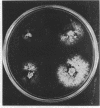Abstract
Mutants of Aspergillus nidulans resistant to methylammonium toxicity are simultaneously derepressed in the presence of ammonium for apparently all ammonium-repressible activities. Enzyme assays directly demonstrate derepression of nitrate, nitrite, and hydroxylamine reductases, xanthine dehydrogenase, urate oxidase, and allantoinase, whereas in vivo tests show that ammonium and methylammonium repression or inhibition (or both) is relieved in these mutants in pathways of nitrate assimilation, purine transport and degradation, and amino acid, amine, and amide catabolism. Ammonium and methylammonium uptake is apparently not defective in these mutants, for they grow normally on limiting levels of these ions as sole nitrogen source. There is no evidence that more than one gene can mutate to produce the methylammonium resistance (meaR) phenotype. Such mutations are semidominant in both heterocaryons and diploids. The ability of meaR mutations to effect derepression of activities specified by genes within another nucleus in a heterocaryon shows that the action of the mea product is not restricted to the nucleus. Three types of hypotheses might explain this generalized derepression. First, ammonium and methylammonium might not themselves be co-repressors but might require a metabolic conversion, blocked in these mutants, to become co-repressors. Secondly, the mea locus might specify an activity expressed in meaR but not wild-type (meaS) strains, which diminishes the concentration of ammonium and methylammonium participating in co-repression. Finally, ammonium repression might involve a macromolecular control element specified by the meaR locus and common to many or all ammonium-repressible systems. The existence of “regulation reversal mutations” at the meaR locus and the lack of uniformity and coordination with which different enzymatic activities respond to mutational derepression is most compatible with the last type of hypothesis.
Full text
PDF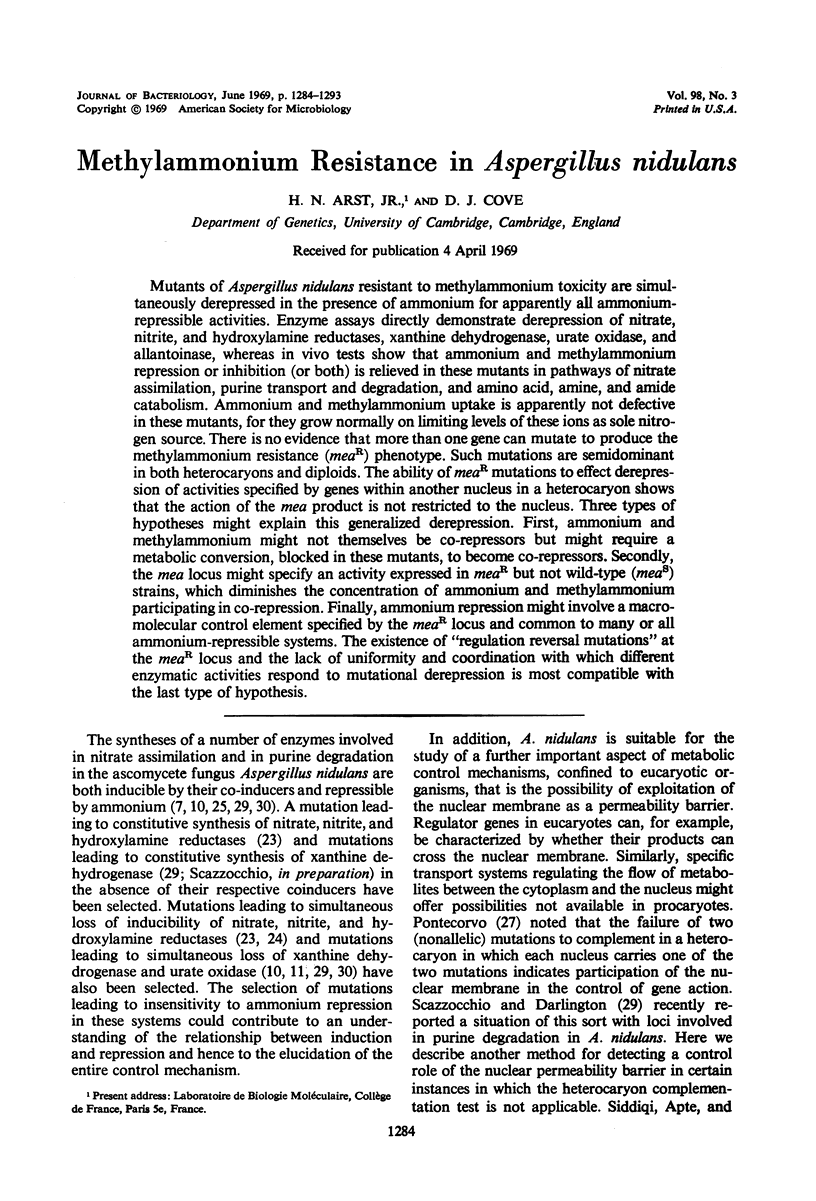
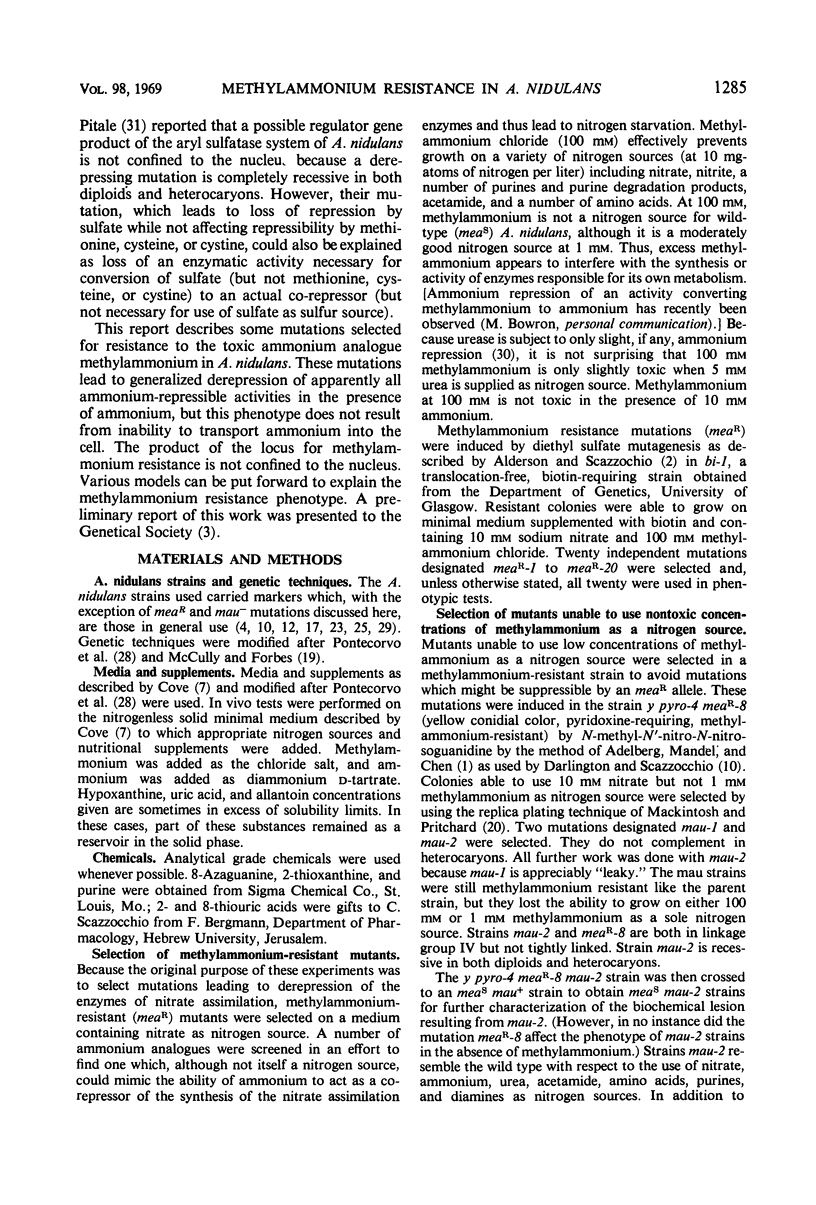
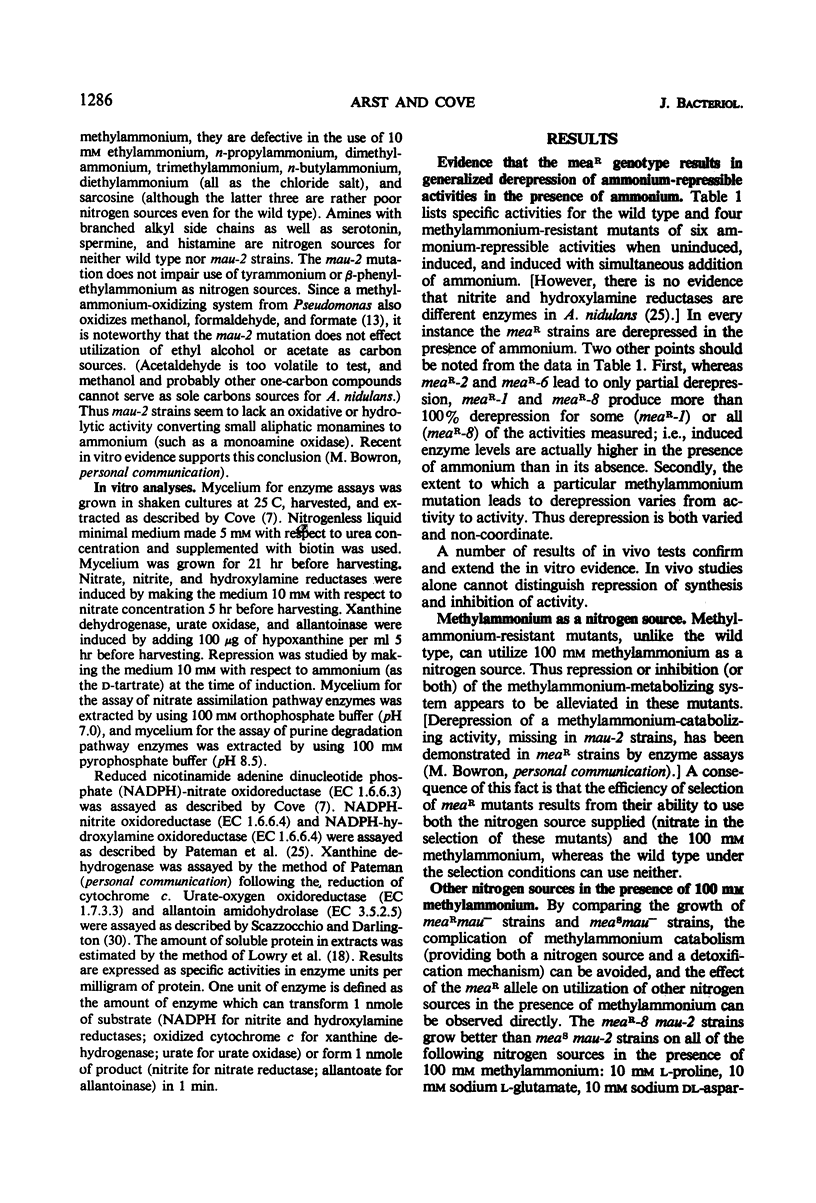
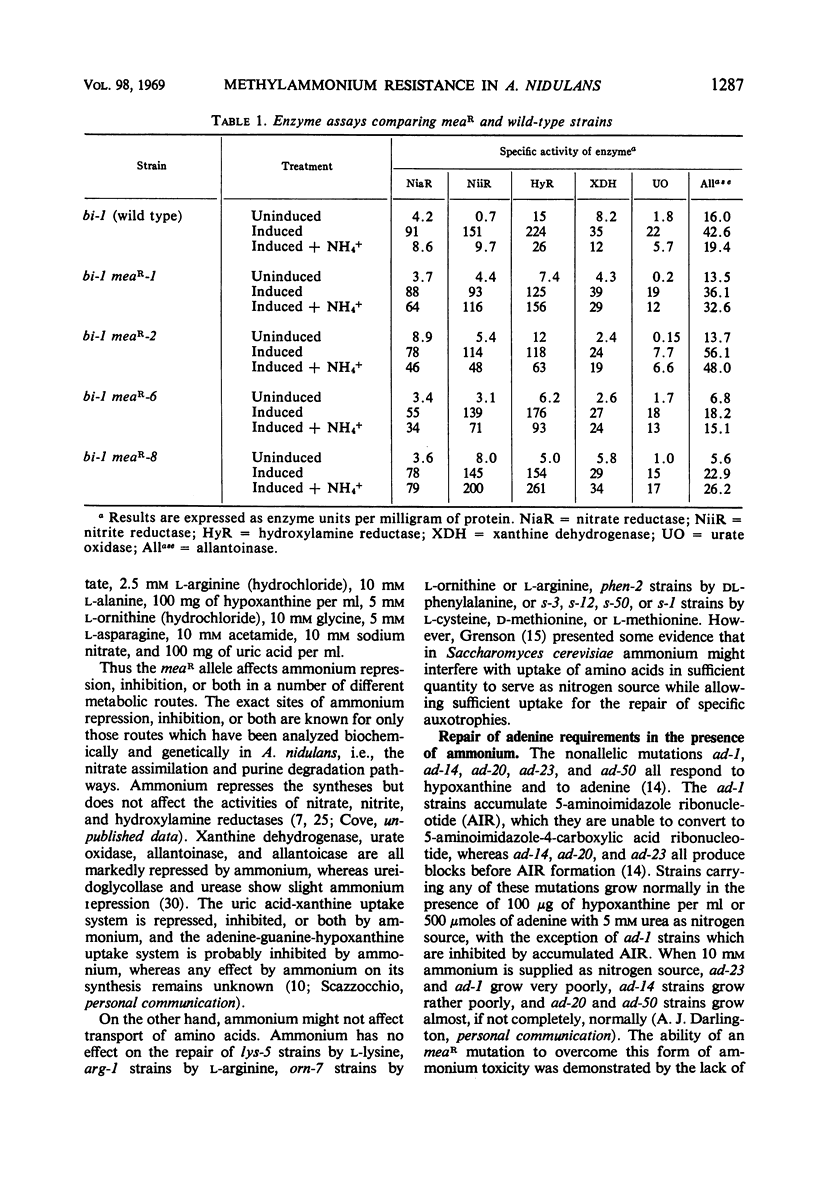
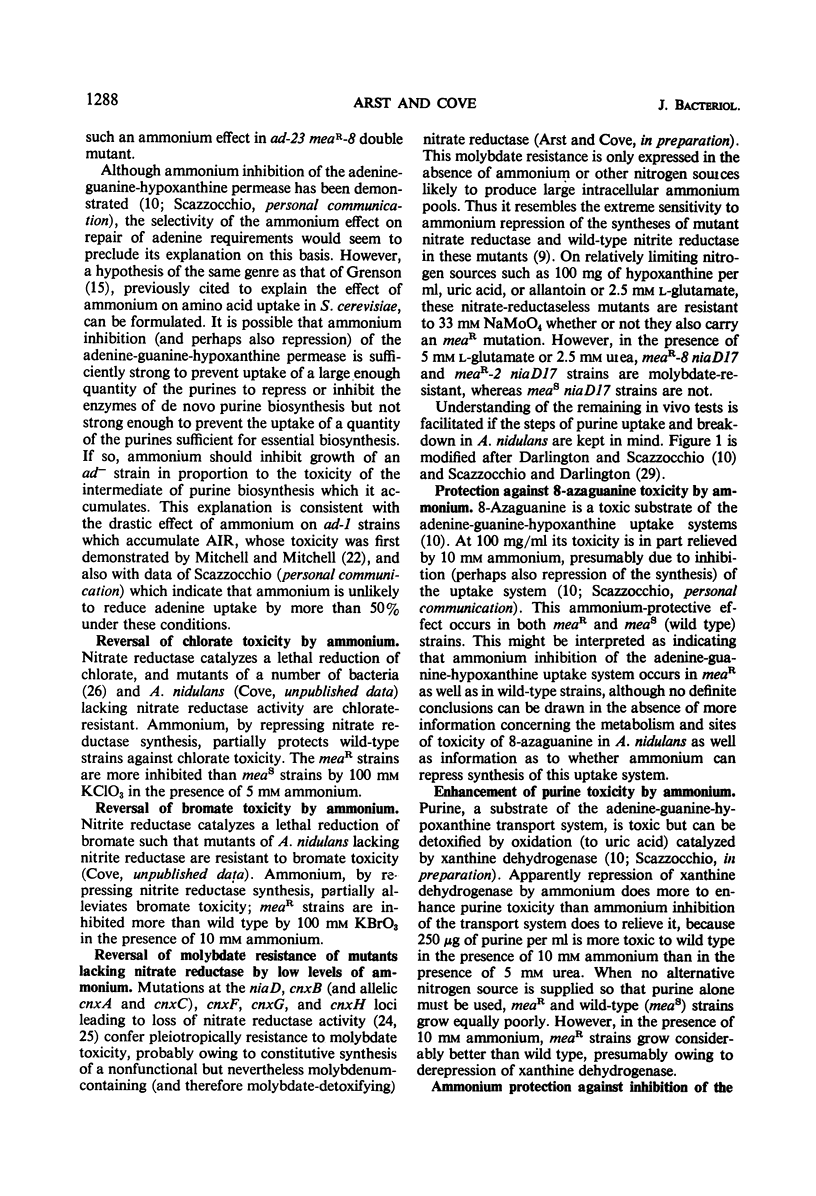
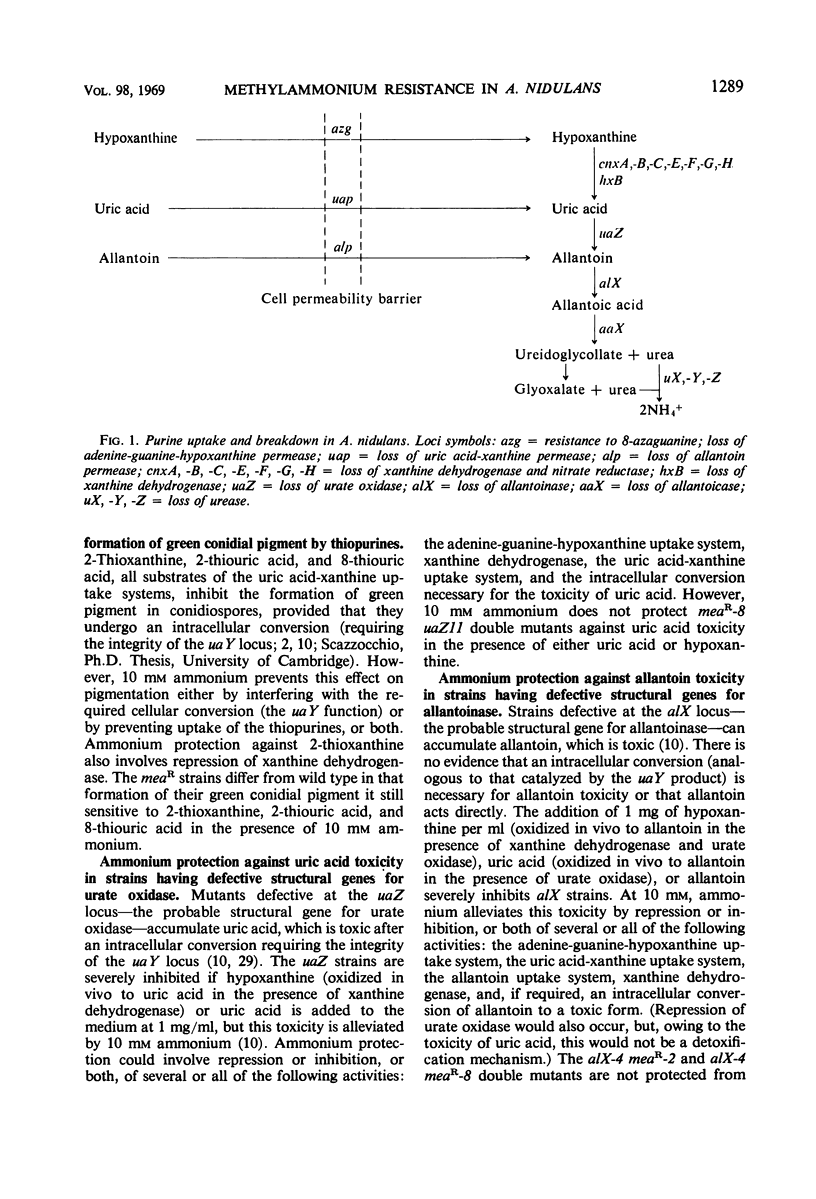
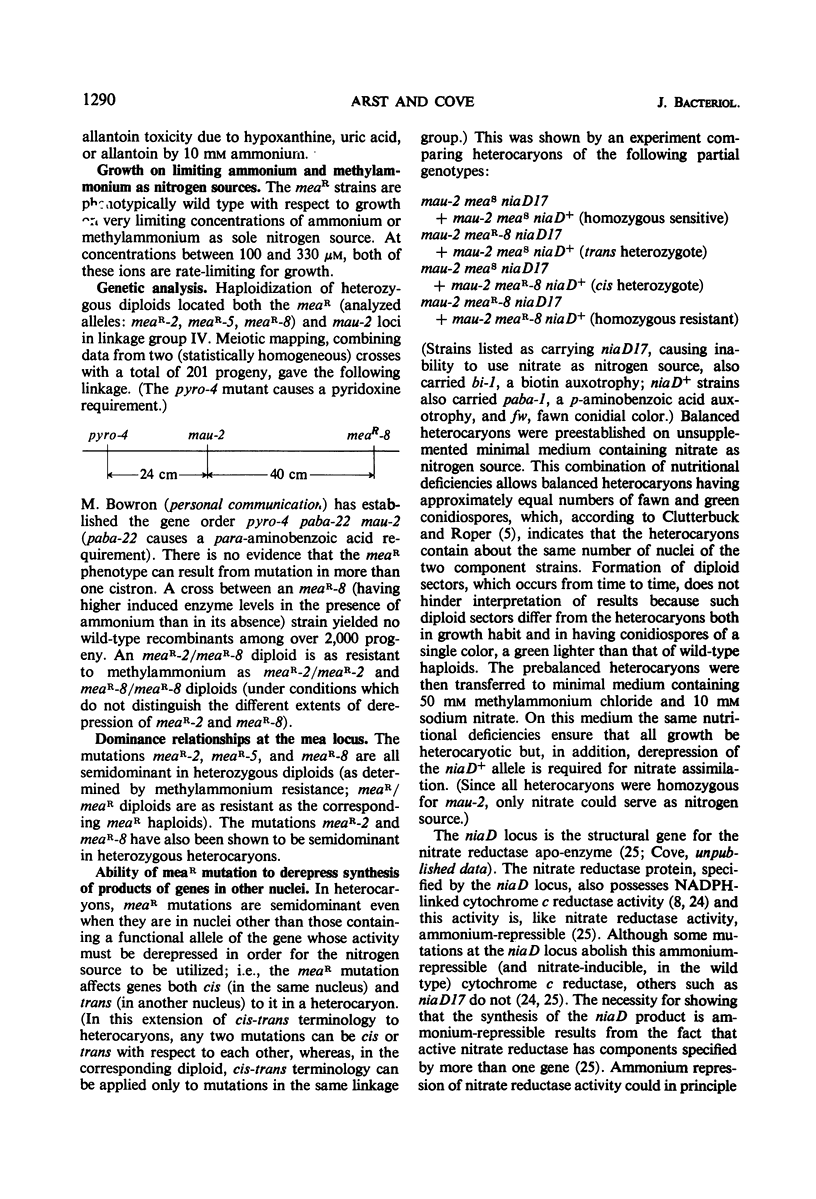
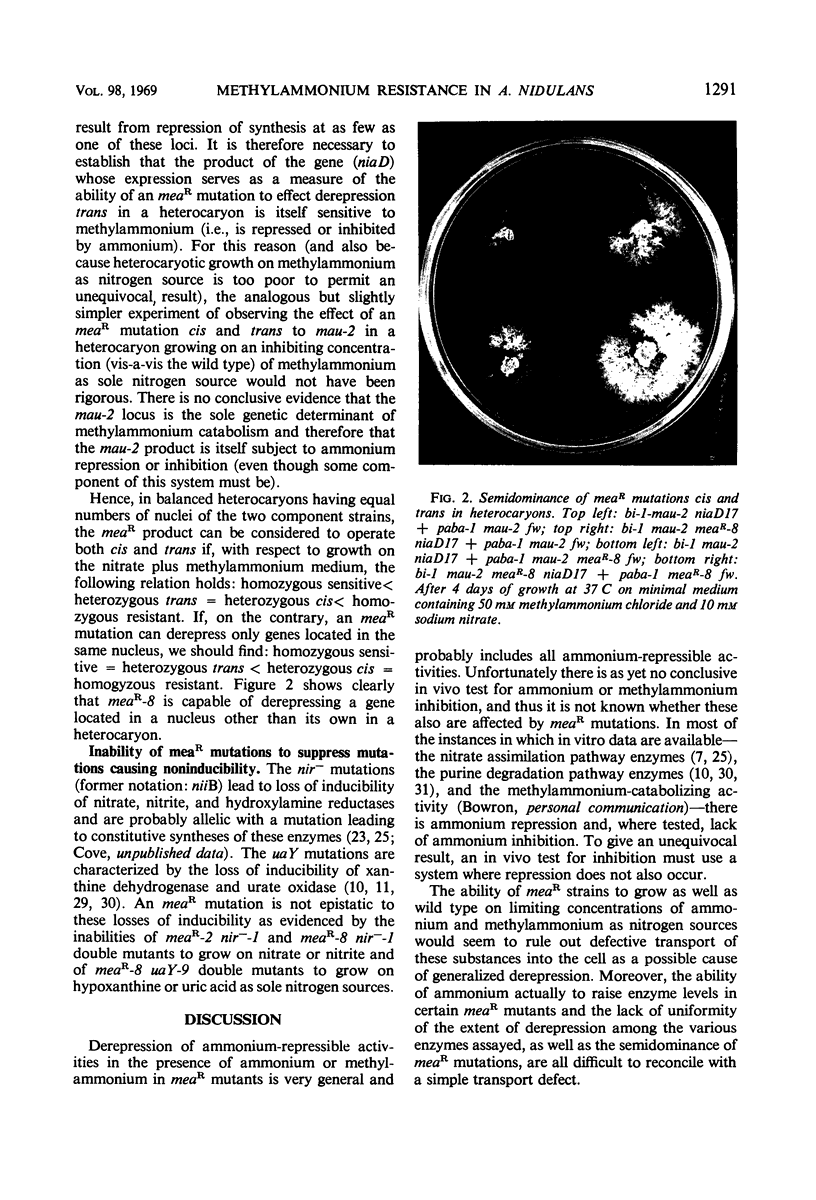
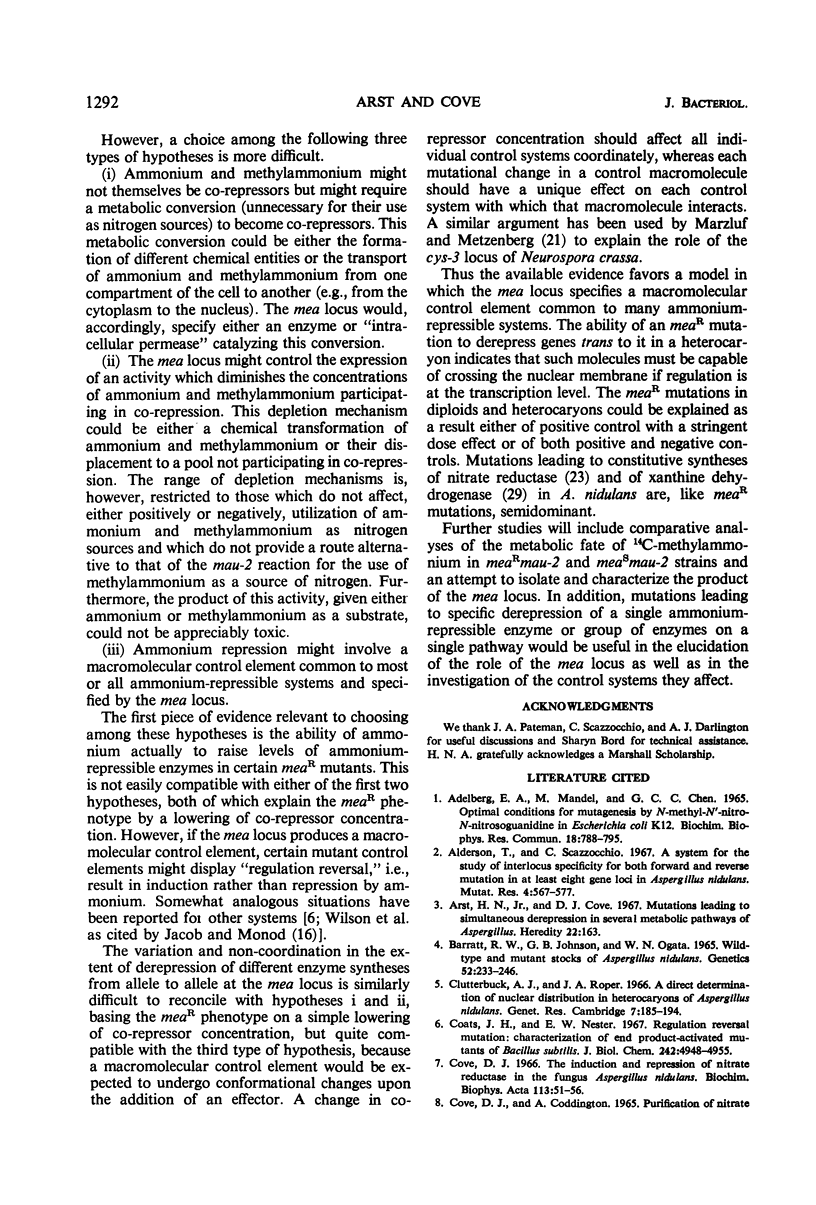
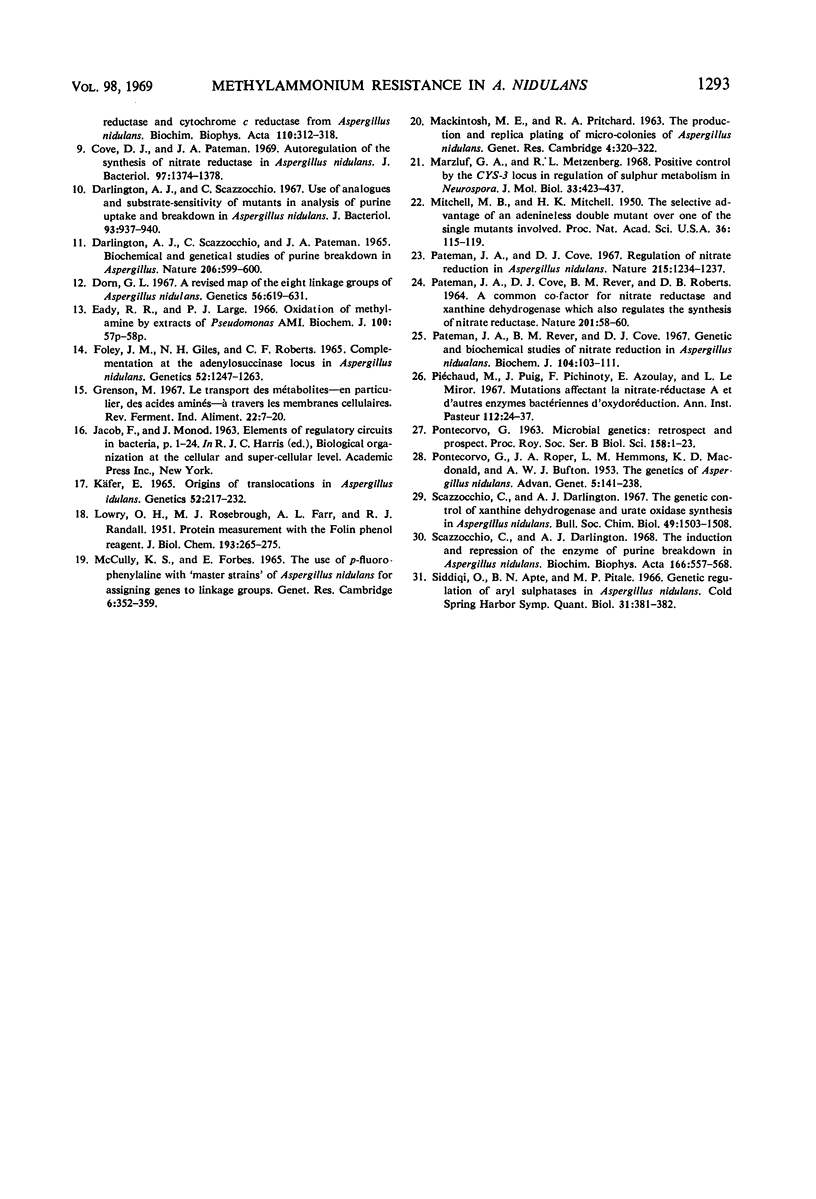
Images in this article
Selected References
These references are in PubMed. This may not be the complete list of references from this article.
- Alderson T., Scazzocchio C. A system for the study of interlocus specificity for both forward and reverse mutation in at least eight gene loci in Aspergillus nidulans. Mutat Res. 1967 Sep-Oct;4(5):567–577. doi: 10.1016/0027-5107(67)90043-7. [DOI] [PubMed] [Google Scholar]
- Barratt R. W., Johnson G. B., Ogata W. N. Wild-type and mutant stocks of Aspergillus nidulans. Genetics. 1965 Jul;52(1):233–246. doi: 10.1093/genetics/52.1.233. [DOI] [PMC free article] [PubMed] [Google Scholar]
- Coats J. H., Nester E. W. Regulation reversal mutation: characterization of end product-activated mutants of Bacillus subtilis. J Biol Chem. 1967 Nov 10;242(21):4948–4955. [PubMed] [Google Scholar]
- Cove D. J., Coddington A. Purification of nitrate reductase and cytochrome c reductase from Aspergillus nidulans. Biochim Biophys Acta. 1965 Nov 22;110(2):312–318. doi: 10.1016/s0926-6593(65)80038-8. [DOI] [PubMed] [Google Scholar]
- Cove D. J., Pateman J. A. Autoregulation of the synthesis of nitrate reductase in Aspergillus nidulans. J Bacteriol. 1969 Mar;97(3):1374–1378. doi: 10.1128/jb.97.3.1374-1378.1969. [DOI] [PMC free article] [PubMed] [Google Scholar]
- Cove D. J. The induction and repression of nitrate reductase in the fungus Aspergillus nidulans. Biochim Biophys Acta. 1966 Jan 11;113(1):51–56. doi: 10.1016/s0926-6593(66)80120-0. [DOI] [PubMed] [Google Scholar]
- Darlington A. J., Scazzocchio C., Pateman J. A. Biochemical and genetical studies of purine breakdown in Aspergillus. Nature. 1965 May 8;206(984):599–600. doi: 10.1038/206599a0. [DOI] [PubMed] [Google Scholar]
- Darlington A. J., Scazzocchio C. Use of analogues and the substrate-sensitivity of mutants in analysis of purine uptake and breakdown in Aspergillus nidulans. J Bacteriol. 1967 Mar;93(3):937–940. doi: 10.1128/jb.93.3.937-940.1967. [DOI] [PMC free article] [PubMed] [Google Scholar]
- Dorn G. L. A revised map of the eight linkage groups of Aspergillus nidulans. Genetics. 1967 Aug;56(4):619–631. doi: 10.1093/genetics/56.4.619. [DOI] [PMC free article] [PubMed] [Google Scholar]
- Foley J. M., Giles N. H., Roberts C. F. Complementation at the adenylosuccinase locus in Aspergillus nidulans. Genetics. 1965 Dec;52(6):1247–1263. doi: 10.1093/genetics/52.6.1247. [DOI] [PMC free article] [PubMed] [Google Scholar]
- Käfer E. Origins of translocations in Aspergillus nidulans. Genetics. 1965 Jul;52(1):217–232. doi: 10.1093/genetics/52.1.217. [DOI] [PMC free article] [PubMed] [Google Scholar]
- LOWRY O. H., ROSEBROUGH N. J., FARR A. L., RANDALL R. J. Protein measurement with the Folin phenol reagent. J Biol Chem. 1951 Nov;193(1):265–275. [PubMed] [Google Scholar]
- Marzluf G. A., Metzenberg R. L. Positive control by the cys-3 locus in regulation of sulfur metabolism in Neurospora. J Mol Biol. 1968 Apr 28;33(2):423–437. doi: 10.1016/0022-2836(68)90199-x. [DOI] [PubMed] [Google Scholar]
- McCully K. S., Forbes E. The use of p-fluorophenylalanine with 'master strains' of Aspergillus nidulans for assigning genes to linkage groups. Genet Res. 1965 Nov;6(3):352–359. doi: 10.1017/s0016672300004249. [DOI] [PubMed] [Google Scholar]
- Mitchell M. B., Mitchell H. K. The Selective Advantage of an Adenineless Double Mutant Over One of the Single Mutants Involved. Proc Natl Acad Sci U S A. 1950 Feb;36(2):115–119. doi: 10.1073/pnas.36.2.115. [DOI] [PMC free article] [PubMed] [Google Scholar]
- PATEMAN J. A., COVE D. J., REVER B. M., ROBERTS D. B. A COMMON CO-FACTOR FOR NITRATE REDUCTASE AND XANTHINE DEHYDROGENASE WHICH ALSO REGULATES THE SYNTHESIS OF NITRATE REDUCTASE. Nature. 1964 Jan 4;201:58–60. doi: 10.1038/201058a0. [DOI] [PubMed] [Google Scholar]
- PONTECORVO G., ROPER J. A., HEMMONS L. M., MACDONALD K. D., BUFTON A. W. J. The genetics of Aspergillus nidulans. Adv Genet. 1953;5:141–238. doi: 10.1016/s0065-2660(08)60408-3. [DOI] [PubMed] [Google Scholar]
- Pateman J. A., Cove D. J. Regulation of nitrate reduction in Aspergillus nidulans. Nature. 1967 Sep 16;215(5107):1234–1237. doi: 10.1038/2151234a0. [DOI] [PubMed] [Google Scholar]
- Pateman J. A., Rever B. M., Cove D. J. Genetic and biochemical studies of nitrate reduction in Aspergillus nidulans. Biochem J. 1967 Jul;104(1):103–111. doi: 10.1042/bj1040103. [DOI] [PMC free article] [PubMed] [Google Scholar]
- Piéchaud M., Puig J., Pichinoty F., Azoulay E., Le Minor L. Mutations affectant la nitrate-réductase A et d'autres enzymes bactériennes d'oxydoréduction. Ann Inst Pasteur (Paris) 1967 Jan;112(1):24–37. [PubMed] [Google Scholar]
- Scazzocchio C., Darlington A. J. The genetic control of xanthine dehydrogenase and urate oxidase synthess in Aspergillus nidulans. Bull Soc Chim Biol (Paris) 1967 Dec 18;49(11):1503–1508. [PubMed] [Google Scholar]
- Scazzocchio C., Darlington A. J. The induction and repression of the enzymes of purine breakdown in Aspergillus nidulans. Biochim Biophys Acta. 1968 Sep 24;166(2):557–568. doi: 10.1016/0005-2787(68)90243-8. [DOI] [PubMed] [Google Scholar]



